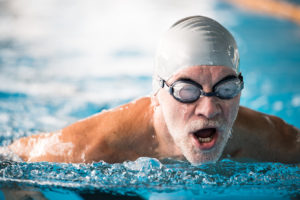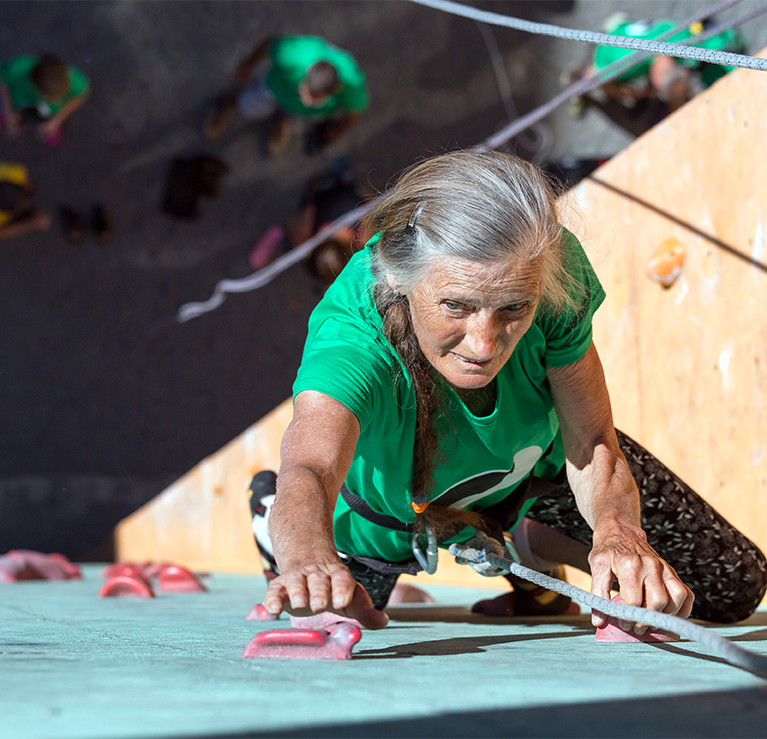DYNAMIC AGING: Overcoming Obstacles and Adding Life to your Years
By Chris Quint, CPT, CSCS
What if your lack of mobility isn’t due to your age but instead due to the number of years you haven’t been moving well? Movement, not just exercise, is essential to living dynamically, well into your golden years. While aging is not a choice, how you age is. The good news is that it is never too late to start moving more and, more importantly, moving better. In order to express your physical capacity, the key is overcoming many of the obstacles placed in front of you. After 15 years of studying human movement, and working with clients of all ages, I have found that most people share three common hurdles: FEAR, CONVENIENCE, and EXERCISE MISCONCEPTIONS. The following are strategies to work through these obstacles and start living dynamically.
FEAR.
This is one of the biggest barriers for many of my clients. Fear of falling, fear of the unknown, fear of being uncomfortable, fear of failing, and fear of breaking the rules society has placed upon aging. Goldeners (50+ years) are told to be safe, to be careful, to rest, to take a seat. But what I have found is that when I provide a safe, encouraging environment where they can get past their fears, we can identify and address their actual movement dysfunctions. One of my clients was afraid to get on the floor a year ago; now she does it with ease. After she overcame her fear, she became empowered to learn multiple strategies for getting up and down – in essence, she became younger.
There is a preconceived notion that “seniors” are all moving slowly, stooped over, cane in hand. No wonder there is so much fear around aging. What if I told you that by changing the narrative of what aging looks like, we can positively influence how we age? In a 1999 study (Hausdorff, Levy, and Wei 1999), researchers flashed words on a screen during a 30-minute video game. One group read: senile, dependent, diseased, while the other group read: wise, astute, accomplished. When tested, the positively reinforced group made gait and walking speed improvements that would commonly be found after months of exercise training. Words have a profound impact on how we move and what we can accomplish. Imagine if we all started looking at aging in a more positive light.
My favorite method for helping clients overcome their fear is quite simple: I give them permission to have fun. After working on squatting mechanics in one of my classes, we had a squatting Easter Egg hunt. We kick a soccer ball around to practice single-leg balance, we had relay races (torch and all) during the Olympics. We throw paper airplanes, we do the wave, and we balance on 2×4’s. I first teach proper exercise mechanics, step by step, and then we incorporate the exercises into everyday movements; essentially, we play. I constantly hear, “This is great, I haven’t done this in ages.” Everyone, no matter their age, loves having fun. It erases all anxiety about trying new movements. Don’t be afraid to find opportunities to interact, to play, to laugh – to FEEL younger.
 CONVENIENCE.
CONVENIENCE.
When you hear the word convenience, what you should hear is “MOVE LESS.” Convenience is a barrier that none of us can completely eliminate, but we must try to reduce its effects on our daily life in order to keep moving. Because of human ingenuity and our natural tendency to want to conserve energy, we move much less than we did hundreds of years ago.
Machines, tools and technology have been evolving and invading almost every aspect of our lives, especially since the Industrial Revolution. Today everything is at our fingertips. From the comfort of our own chair, we can order groceries and have them delivered, we can press a button to lock the car, the house and shut the garage, and even press a button on the chair to stand us up. Just think of all of the movements that used to be incorporated on a daily basis. From the process of planting, harvesting, milling and then kneading dough – now we swipe our card for a pre-made, pre-sliced loaf of bread. While we may no longer need to perform all of these movements in our modern world, our physiology still requires proper functional movement.
Now don’t get me wrong, I enjoy modern conveniences just like everyone else. My air conditioner is always running on a hot day, and my fancy contact lenses allow me to see the world. However, we can all find ways to move more and age less. There are many ways to incorporate movement despite our conveniences. Here are a few of my favorite tips to get you started:
- Try grocery shopping with a hand-basket instead of a cart. This will challenge your grip strength and will increase the number of times you have to squat to pick up and put down your basket. Carrying a load will challenge your core and your balance. It will also force you to work on weight distribution. All of this from carrying a basket! If you simply have too many groceries for a basket, use the cart. But park far away from the store and go ahead and load your own groceries into your car– you’ll work on rotational, core and arm strength.
- Re-arrange your kitchen. Move your most used dishes to a higher shelf so you have to reach and stretch every time you need them. Move your pots and pans to the lowest cabinet so you have to squat and lift when you cook. While you are in the kitchen, go ahead and try grinding your own coffee for grip strength and endurance, or get out your whisk to work your forearms, instead of using the electric mixer.
- Sit somewhere different every time. This will give you freedom to adapt positions while avoiding repetitive motions. Leave your favorite chair empty and try the floor. Squat, sit Indian style, put one leg out, sit on a pillow. If you can’t get on the floor, try sitting on a step stool or ottoman. Or forego sitting all together and stand! Get up, get down and move. Just think of all the movement that could happen in 30 minutes while you are watching your favorite tv show!
- Take off your shoes. Modern footwear does not let the hundreds of muscles, tendons, and ligaments, and 33 joints in each foot to move. So, wake up those dormant feet and walk barefoot on a variety of surfaces. Let the thousands of nerve endings in your feet feel the world. Strong feet are the foundation of balance and stability.
EXERCISE MISCONCEPTIONS.
If you went to the gym for one hour, every day, most would consider you to be very active. But what if you are sedentary the other 23 hours of the day? While exercise can be beneficial, it does have many flaws¬. It is often performed in small quantities and high intensities. It usually involves large and unnatural forces to joints, and often you end up working the same few muscle groups over and over again. It is a process that is repetitive and unnatural. It is a poor substitute for MOVEMENT.
Natural movement, however, takes us back to our roots, allowing us to purposely move in the way our bodies were designed to perform. Such movements include walking, squatting, crawling, climbing, throwing, catching, balancing, carrying, pushing, pulling, and twisting, to name a few. Doing these natural movements not only utilizes the large muscle groups we think of at the gym, but also utilizes the other 500 muscles that usually sit dormant.
As a society, we have become less concerned with natural movement and more familiar with high tech cardio machines. We “exercise” for an hour and check it off of our list. Movement has been so absent in our lives; we have become stagnant and unable to navigate the world outside the gym. Although well-intentioned, “senior” exercise programs are also neglecting to implement natural movement strategies. Many encourage repetitions and exercising in the easiest way. Unfortunately, these classes are not preparing you for real world applications, like getting on the floor with your grandkids or hiking on a rocky trail. So instead of resolving to only “exercise” or go to a class, find ways to move throughout your entire day, which will in turn decrease your sedentarism and increase your physical capacity, regardless of age.
If you are willing to change your habits and work through the common barriers to living dynamically, you will likely find yourself embracing and celebrating aging, no longer dreading it. Remember, you are not too old, you are just under moved. Putting movement back into your life will not only add years to your life but life to your years.
Chris Quint has a bachelor’s degree in Human Health and Performance and is a double certified personal trainer and strength and conditioning specialist with 15 years of experience. He is passionate about identifying movement pattern dysfunction and creating restorative motion programs to get his clients moving again.
Chris Quint Integrated Wellness provides holistic personal training services and is dedicated to helping clients with a wide variety of restrictions achieve a higher degree of health and wellness.
Website: CQIntegratedWellness.com
Facebook: facebook.com/CQIntegratedWellness
Email: CQIntegratedWellness@icloud.com
References
Bowman, K. (2017). Dynamic Aging. United States of America: Propriometrics Press.
Hausdorff, Jeffrey M., Becca R. Levy, Jeanne Y. Wei. 1999. “The Power of Ageism on Physical Function of Older Persons: Reversibility of Age-Related Gait Changes.” Journal of the American Geriatrics Society 47(11):1346-1349






